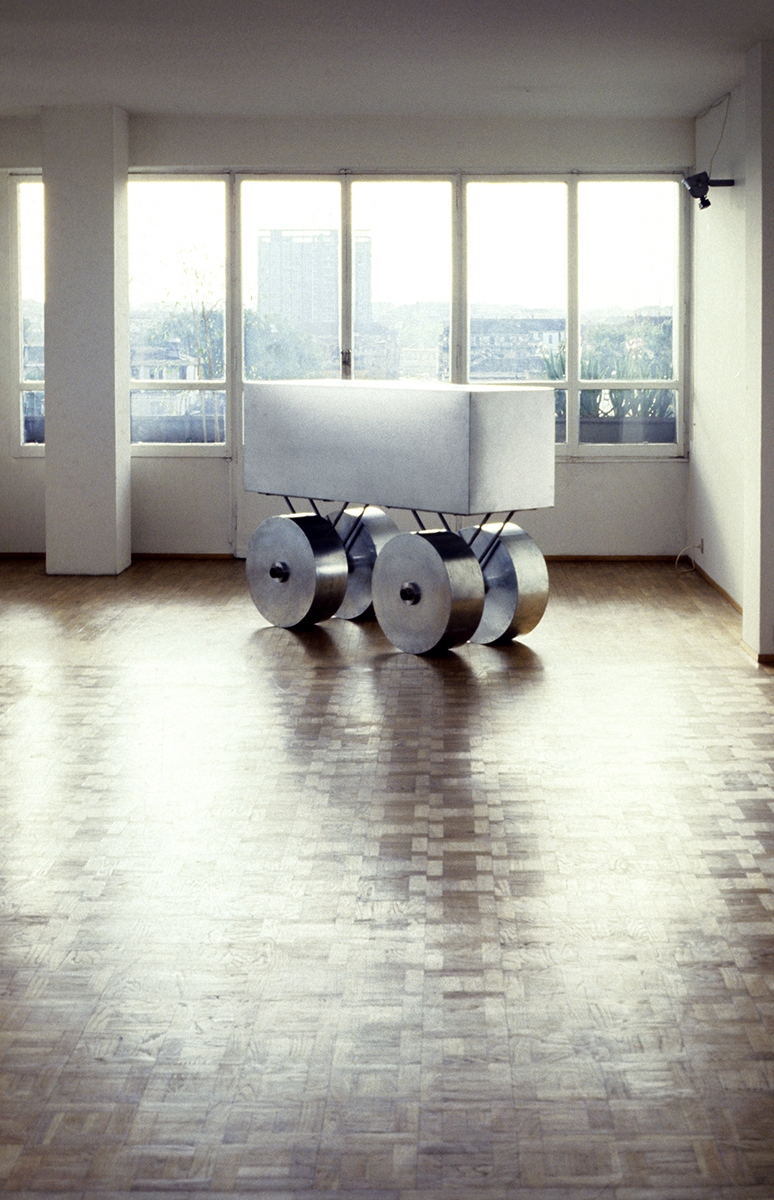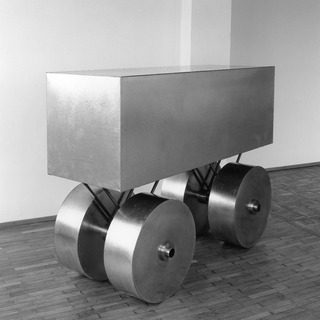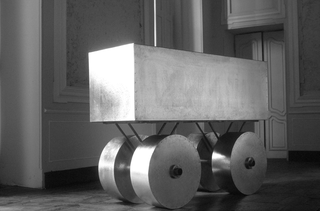The wheels
Wheels are the first nature cipher to appear in Cavenago’s work: they are simple cylinders, minimal, stylised elements. An exemplary sign of movement, they are also the conveyed image of every form of communication. To begin with, they were applied to squared containers, immediately transforming them into vehicles; then they gave the impetus for building objects comparable to trucks and motorbikes, sometimes expanded to fill great spaces, at other times extremely compressed, but always synthetic and simplified in their shapes. On other occasions again, the wheels appear on their own, in two pairs connected together by nothing but a central joint that allows them to move in any direction, or so reduced in size as to become the motor of unlikely skates.
Their meaning can be found in the way that they indicate some possibility of movement or other: forwards or backwards, up and down on the vertical, towards an unattainable diagonal. What makes them even more significant is the fact that, in these last works, this ex- treme freedom of movement is progressively denied and solved in terms of tension.
Throughout all of Cavenago’s work, simulation is of fundamental importance: simulation at every level, even when it means pretending to produce industrial objects whose perfect execution is a guarantee of their functionality.
Angela Vettese, XV Biennale internazionale del Bronzetto Piccola Scultura (cat.), Electa, Milano 1991



Social
Contatti
umberto@cavenago.info